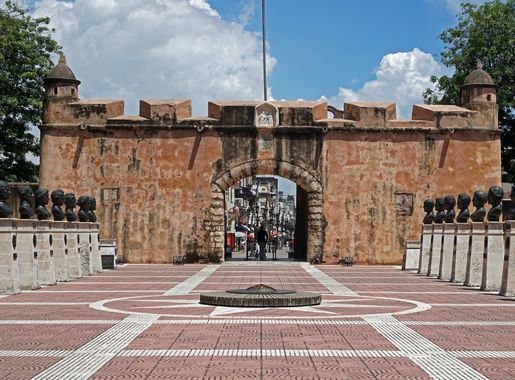
Zona Colonial: The Timeless Heart of Santo Domingo
Explore Zona Colonial in Santo Domingo: A UNESCO World Heritage Site rich in history, culture, and vibrant life, offering a unique blend of the old and the new.
Zona Colonial is the historic heart of Santo Domingo, the capital of the Dominican Republic. This UNESCO World Heritage Site is a treasure trove of colonial-era architecture, cobblestone streets, and vibrant culture. Walking through the streets, you will find yourself surrounded by buildings that date back to the 16th century, including the first cathedral, hospital, and university in the Americas. Each corner of this neighborhood tells a story, making it a living museum that showcases the rich history of the New World. The neighborhood is bustling with life, offering tourists a mix of historical landmarks and modern amenities. The iconic Calle El Conde is a pedestrian-only street lined with shops, cafes, and restaurants, making it a perfect spot for a leisurely stroll or a quick bite. Plaza España, another must-visit, is a large open space where you can relax and take in views of the Alcázar de Colón, a former residence of Christopher Columbus’s son. The area is also home to many museums, such as the Museo de las Casas Reales, which offers insights into the colonial past. Zona Colonial is not just about history; it’s also a cultural hotspot. The neighborhood hosts various festivals and events throughout the year that celebrate Dominican culture, music, and art. Street performers, local artists, and musicians add to the vibrant atmosphere, making it a lively place to explore both day and night. Whether you are a history buff, a foodie, or someone looking to soak up the local culture, Zona Colonial has something for everyone.
Local tips in Zona Colonial
- Wear comfortable shoes as the cobblestone streets can be uneven.
- Visit early in the morning or late afternoon to avoid the midday heat.
- Many museums are closed on Mondays, so plan your visit accordingly.
- Bring cash, as some small shops and eateries do not accept cards.
- Try local dishes at the many traditional restaurants for an authentic experience.
Zona Colonial: The Timeless Heart of Santo Domingo
Zona Colonial is the historic heart of Santo Domingo, the capital of the Dominican Republic. This UNESCO World Heritage Site is a treasure trove of colonial-era architecture, cobblestone streets, and vibrant culture. Walking through the streets, you will find yourself surrounded by buildings that date back to the 16th century, including the first cathedral, hospital, and university in the Americas. Each corner of this neighborhood tells a story, making it a living museum that showcases the rich history of the New World. The neighborhood is bustling with life, offering tourists a mix of historical landmarks and modern amenities. The iconic Calle El Conde is a pedestrian-only street lined with shops, cafes, and restaurants, making it a perfect spot for a leisurely stroll or a quick bite. Plaza España, another must-visit, is a large open space where you can relax and take in views of the Alcázar de Colón, a former residence of Christopher Columbus’s son. The area is also home to many museums, such as the Museo de las Casas Reales, which offers insights into the colonial past. Zona Colonial is not just about history; it’s also a cultural hotspot. The neighborhood hosts various festivals and events throughout the year that celebrate Dominican culture, music, and art. Street performers, local artists, and musicians add to the vibrant atmosphere, making it a lively place to explore both day and night. Whether you are a history buff, a foodie, or someone looking to soak up the local culture, Zona Colonial has something for everyone.
Iconic landmarks you can’t miss
Columbus Park
Explore the historical charm of Columbus Park, a serene green haven in Santo Domingo that embodies the rich culture and heritage of the Dominican Republic.
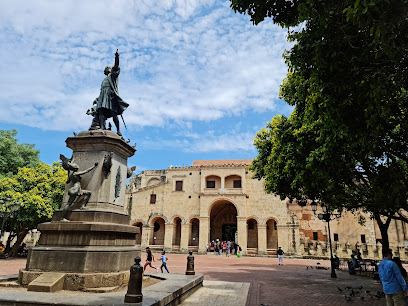
Plaza de la Hispanidad or Spain
Experience the vibrant culture and rich history of the Dominican Republic at Plaza de la Hispanidad, a picturesque park in Santo Domingo's Zona Colonial.
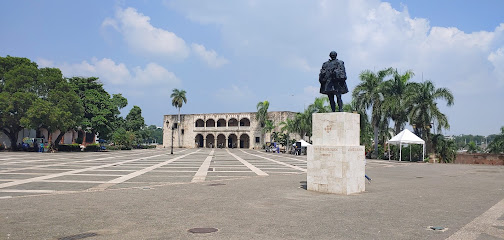
Independence Park
Discover the beauty and history of Independence Park in Santo Domingo, a serene retreat filled with lush gardens and rich cultural significance.

Fortaleza Ozama
Discover the rich history of the Dominican Republic at Fortaleza Ozama, the oldest military fortification in the Americas located in historic Santo Domingo.
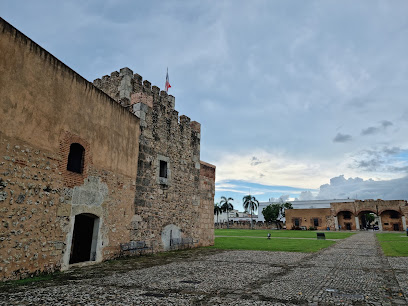
Alcázar de Colón
Explore the Alcázar de Colón, a historic museum in Santo Domingo's Colonial Zone, showcasing the legacy of the Spanish conquest and colonial life.
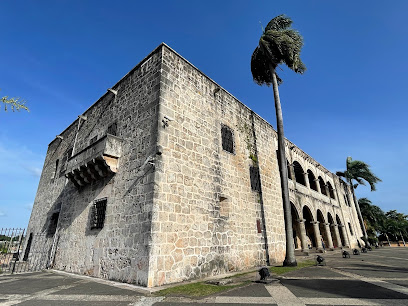
Plaza María de Toledo
Experience the charm of Plaza María de Toledo, a historical treasure in the heart of Santo Domingo's Zona Colonial, where culture meets tranquility.
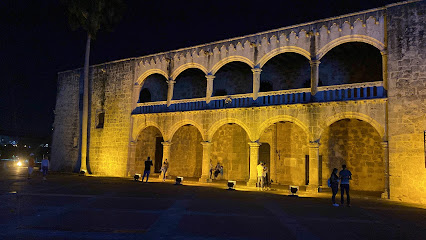
Nuestra Señora de la Encarnación
Explore the captivating beauty and historical significance of Nuestra Señora de la Encarnación in Santo Domingo's Colonial Zone.

Chu Chu Colonial
Experience the rich history and vibrant culture of Santo Domingo's Zona Colonial aboard the charming Chu Chu Colonial tour train.
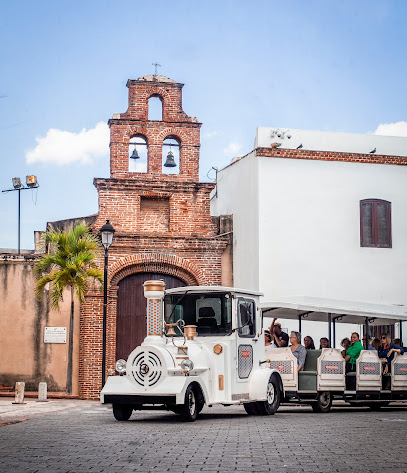
Colonial Zone Dominican Republic
Discover the rich history and vibrant culture of the Colonial Zone in Santo Domingo, the oldest European settlement in the Americas.
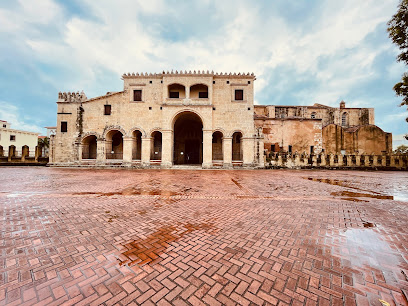
Zona Colonial Santo Domingo
Discover the enchanting Zona Colonial Santo Domingo, a UNESCO World Heritage site bursting with history, culture, and vibrant Dominican life.
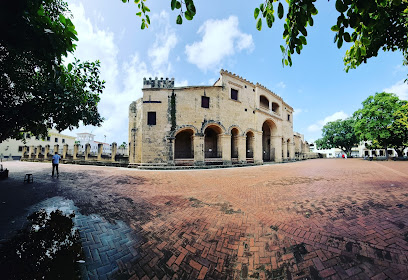
Unmissable attractions to see
Plaza María de Toledo
Discover the vibrant heart of Santo Domingo at Plaza María de Toledo, a historic square perfect for relaxation and cultural immersion.
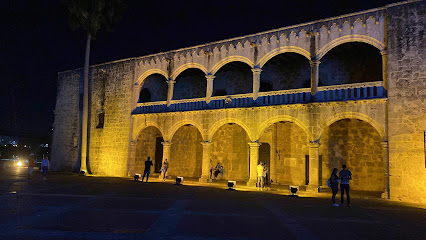
Nuestra Señora de la Encarnación
Discover the historical beauty of Nuestra Señora de la Encarnación, a stunning cathedral in Santo Domingo's captivating Zona Colonial.
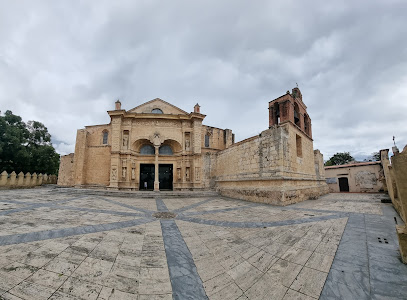
Museum of the Royal Houses
Discover the rich history of the Dominican Republic at the Museum of the Royal Houses, a key attraction in Santo Domingo's Zona Colonial.
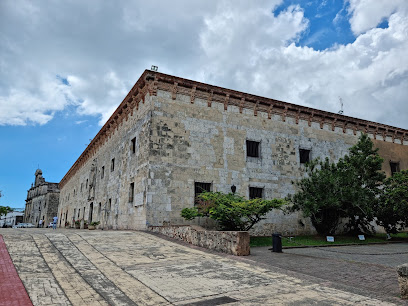
Pantheon of the Fatherland
Discover the Pantheon of the Fatherland in Santo Domingo: a stunning tribute to Dominican history, art, and culture within the heart of the Zona Colonial.
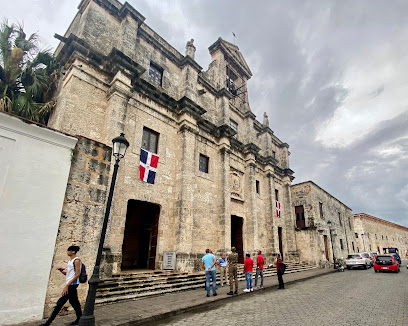
Chu Chu Colonial
Explore the rich history and vibrant culture of Santo Domingo at Chu Chu Colonial, a captivating tourist attraction in the heart of Zona Colonial.
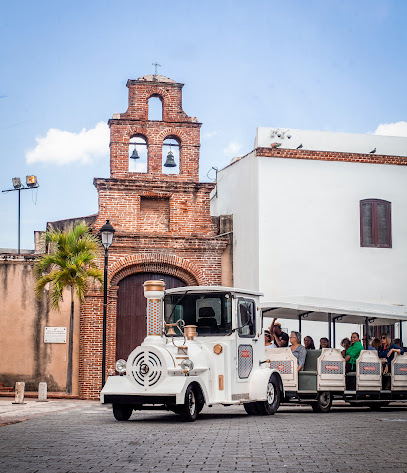
Essential places to dine
Jalao
Experience authentic Dominican cuisine at Jalao in Santo Domingo's historic Colonial Zone - where every dish tells a story.
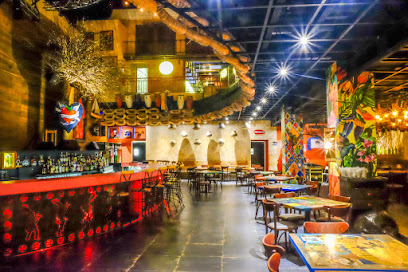
Pat'e Palo European Brasserie
Discover the exquisite flavors of modern French cuisine at Pat'e Palo European Brasserie in Santo Domingo's historic Zona Colonial.
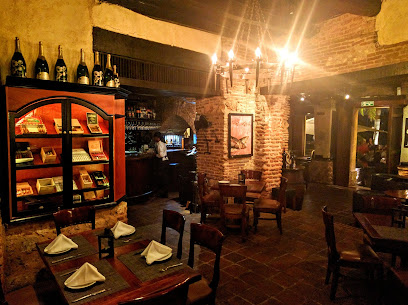
Buche Perico
Discover authentic Dominican flavors at Buche Perico in Santo Domingo's historic Zona Colonial – where culinary tradition meets modern dining.
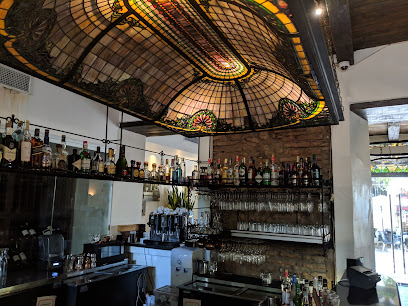
SegaZona
Experience authentic Italian cuisine at SegaZona in Santo Domingo's Zona Colonial; where every dish tells a story.
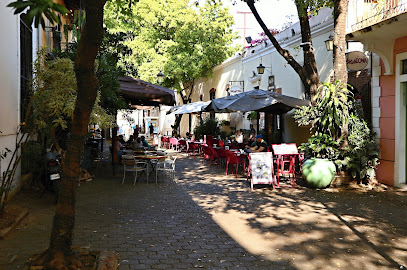
Maraca
Experience authentic Dominican flavors at Maraca in Santo Domingo's historic Zona Colonial – where culinary tradition meets modern elegance.
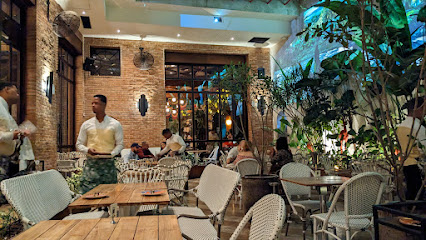
El Buho Eatery
Experience the vibrant flavors of Santo Domingo at El Buho Eatery, where culinary creativity meets local tradition in a charming bistro setting.
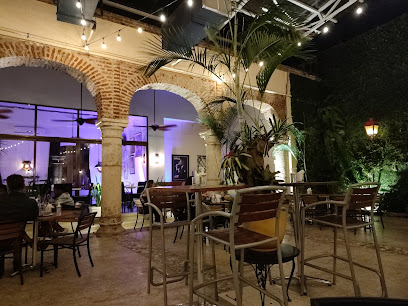
Mesón de Bari
Discover authentic Dominican flavors at Mesón de Bari in Santo Domingo's historic Zona Colonial - A true culinary delight!
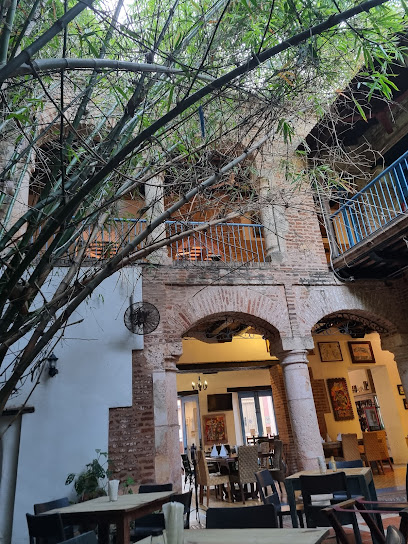
Don Nestor Parrillada Zona Colonial
Discover authentic Dominican flavors at Don Nestor Parrillada in Zona Colonial, where delicious grilled meats meet vibrant Caribbean culture.
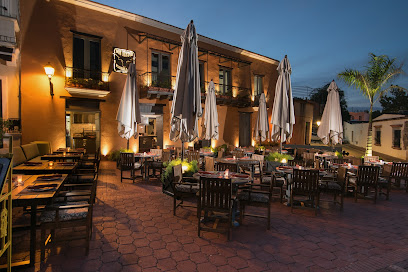
Valiente Restaurante
Discover Valiente Restaurante in Santo Domingo for an exquisite blend of New Orleans, Dominican, and Mediterranean flavors in a charming setting.
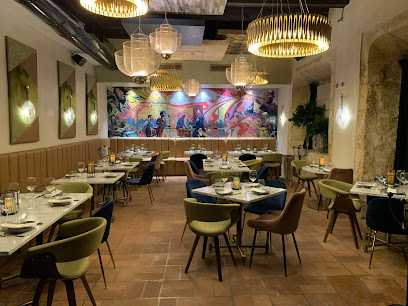
La Cocina de Cheska
Experience authentic Spanish flavors at La Cocina de Cheska in Santo Domingo's vibrant Zona Colonial.

Markets, malls and hidden boutiques
El Mercado Colonial
Explore El Mercado Colonial in Santo Domingo for authentic Dominican souvenirs and a taste of local culture, perfect for every traveler.
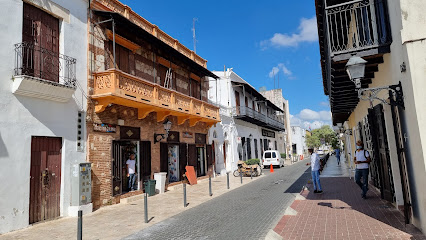
From My Country Gift Shop
Discover authentic Dominican crafts and culinary delights at From My Country Gift Shop in the heart of Santo Domingo's Zona Colonial.

Gift Shop Mercado Artesanal
Discover unique handcrafted treasures at the Mercado Artesanal in Santo Domingo's historic Zona Colonial, showcasing the best of Dominican artistry and culture.
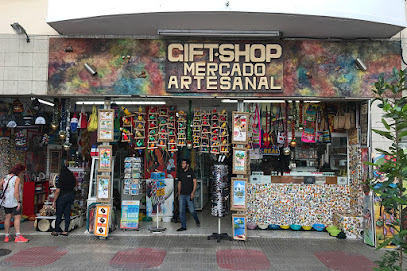
The Tiny Shop
Explore The Tiny Shop in Santo Domingo for unique, stylish second-hand clothing that reflects local culture and creativity.
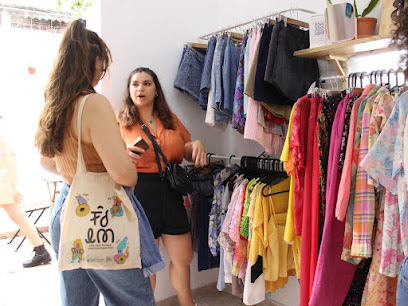
D Lugo Gift Shop
Explore D Lugo Gift Shop in Santo Domingo for unique Dominican souvenirs showcasing local art and culture in the heart of Zona Colonial.
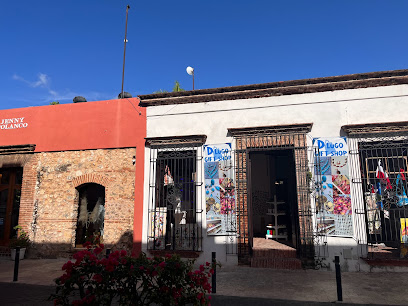
Jenny Polanco Zona Colonial Boutique
Explore unique fashion and artisanal crafts at Jenny Polanco Boutique in the historic Zona Colonial of Santo Domingo.
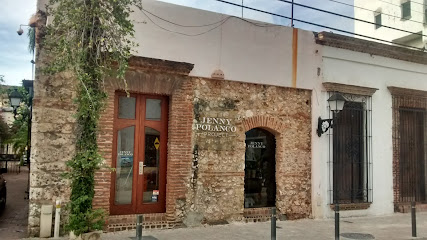
Paseo Artesanal
Explore the vibrant Paseo Artesanal in Santo Domingo for unique crafts, authentic souvenirs, and a taste of Dominican culture.
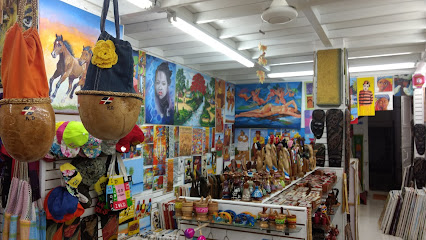
La Placita Mercadito Colonial
Explore La Placita Mercadito Colonial, a vibrant gift shop in Santo Domingo's Zona Colonial, offering unique Dominican crafts and souvenirs.
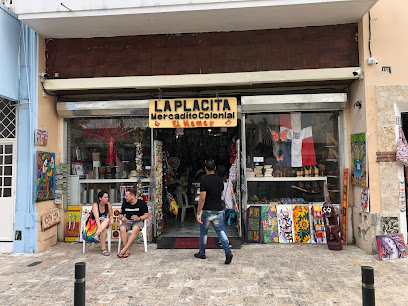
Gift Shop Tio Juan
Explore Gift Shop Tio Juan in Santo Domingo for authentic Dominican crafts and unique souvenirs that celebrate the island's vibrant culture.
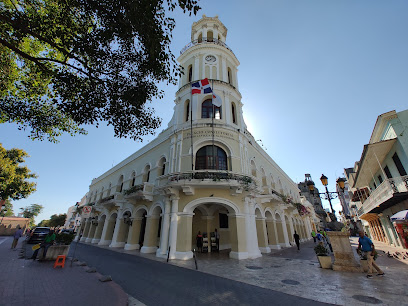
Artesanía Massiel
Explore the vibrant culture of the Dominican Republic with unique gifts and handmade treasures at Artesanía Massiel in Santo Domingo's historic Zona Colonial.

Essential bars & hidden hideouts
Onno's Zona Colonial Bar & Restaurant
Discover the vibrant nightlife and diverse culinary delights of Onno's Zona Colonial in the heart of Santo Domingo's historic district.
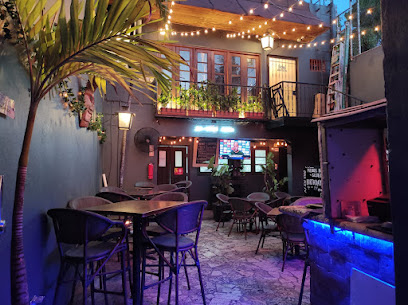
Parada 77
Discover the vibrant nightlife of Santo Domingo at Parada 77, a must-visit bar in the historic Zona Colonial, renowned for its cocktails and lively atmosphere.
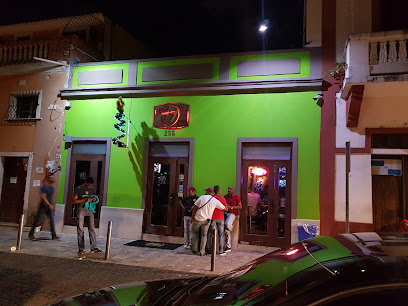
Bio Bar
Discover the lively ambiance of Bio Bar in Santo Domingo, where cocktails and culture collide in the historic Zona Colonial.
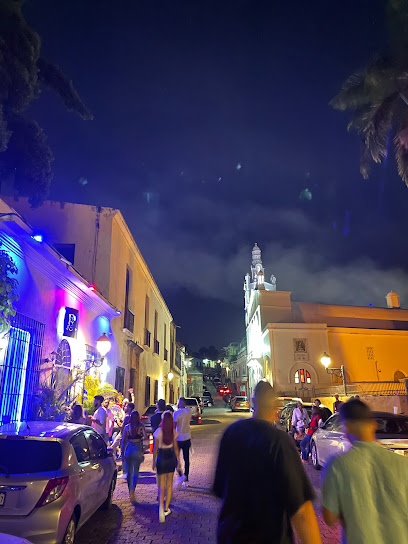
Sabina Bar Zona Colonial
Discover the vibrant nightlife and authentic flavors at Sabina Bar Zona Colonial in Santo Domingo's historic district.
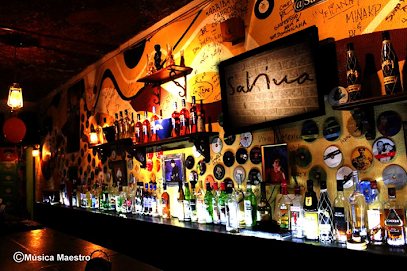
Caciba Bar
Experience the vibrant nightlife of Santo Domingo at Caciba Bar, a local favorite in the historic Zona Colonial with live music and delicious drinks.
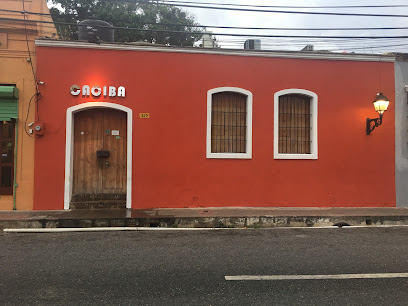
Veo Veo / Local Colonial
Discover the vibrant heart of Santo Domingo at Veo Veo / Local Colonial, where art, cocktails, and live music create unforgettable experiences.
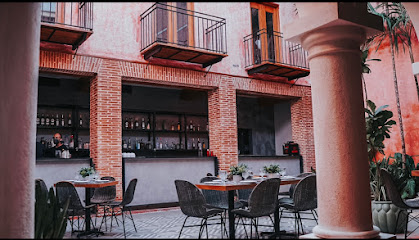
La Resistencia
Discover the vibrant tastes of Dominican cuisine at La Resistencia, a lively tapas bar in Santo Domingo Este, perfect for socializing and savoring local flavors.
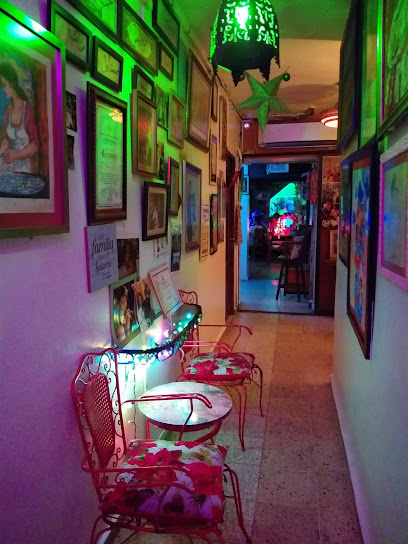
Rox Bar
Immerse yourself in the lively nightlife of Santo Domingo at Rox Bar, where creative cocktails and pulsating music create unforgettable experiences.
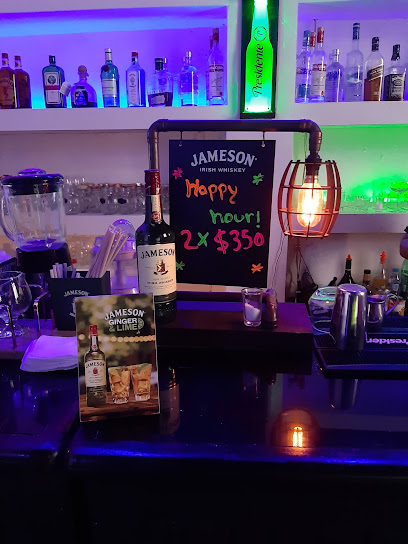
Bar 75 Zona
Discover the vibrant nightlife at Bar 75 Zona in Santo Domingo's historic Zona Colonial, where signature cocktails and live music await.
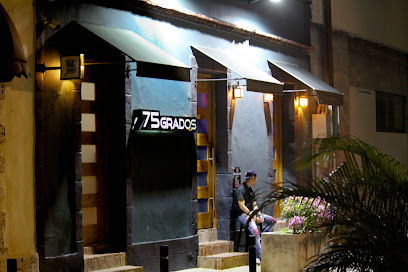
Vida Loca Bar
Discover the vibrant nightlife of Santo Domingo at Vida Loca Bar, where cocktails, music, and fun await in the historic Zona Colonial.
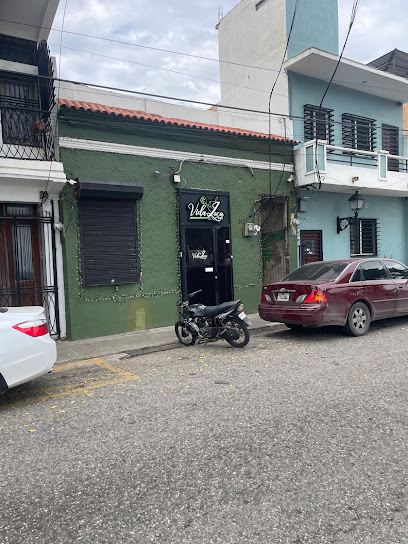
Local Phrases
-
- HelloHola
[oh-lah] - GoodbyeAdiós
[ah-dee-ohs] - YesSí
[see] - NoNo
[noh] - Please/You're welcomePor favor/De nada
[por fah-vor/de nah-dah] - Thank youGracias
[grah-see-ahs] - Excuse me/SorryPerdón/Lamento
[pair-dohn/lah-men-toh] - How are you?¿Cómo estás?
[koh-moh ehs-tahs] - Fine. And you?Bien. ¿Y tú?
[bee-ehn. ee too] - Do you speak English?¿Hablas inglés?
[ah-blahs een-glehs] - I don't understandNo entiendo
[noh ehn-tee-ehn-doh]
- HelloHola
-
- I'd like to see the menu, pleaseQuisiera ver el menú, por favor
[kee-see-eh-rah behr ehl meh-noo, por fah-vor] - I don't eat meatNo como carne
[noh koh-moh kahr-neh] - Cheers!¡Salud!
[sah-loohd] - I would like to pay, pleaseMe gustaría pagar, por favor
[meh goos-tah-ree-ah pah-gahr, por fah-vor]
- I'd like to see the menu, pleaseQuisiera ver el menú, por favor
-
- Help!¡Ayuda!
[ah-yoo-dah] - Go away!¡Vete!
[veh-teh] - Call the Police!¡Llama a la policía!
[yah-mah ah lah poh-lee-see-ah] - Call a doctor!¡Llama a un médico!
[yah-mah ah oon meh-dee-koh] - I'm lostEstoy perdido
[ehs-toy pair-dee-doh] - I'm illEstoy enfermo
[ehs-toy ehn-fehr-moh]
- Help!¡Ayuda!
-
- I'd like to buy...Quisiera comprar...
[kee-see-eh-rah kohm-prahr] - I'm just lookingSolo estoy mirando
[soh-loh ehs-toy mee-rahn-doh] - How much is it?¿Cuánto cuesta?
[kwan-toh kwehs-tah] - That's too expensiveEsto es demasiado caro
[ehs-toh ehs deh-mah-syah-doh kah-roh] - Can you lower the price?¿Puedes bajar el precio?
[pweh-dehs bah-hahr ehl pree-syoh]
- I'd like to buy...Quisiera comprar...
-
- What time is it?¿Qué hora es?
[keh oh-rah ehs] - It's one o'clockEs la una
[ehs lah oo-nah] - Half past (10)Las diez y media
[lahs dee-ehs ee meh-dee-ah] - MorningMañana
[mah-nyah-nah] - AfternoonTarde
[tahr-deh] - EveningNoche
[noh-cheh] - YesterdayAyer
[ah-yehr] - TodayHoy
[oy] - TomorrowMañana
[mah-nyah-nah] - 1Uno
[oo-noh] - 2Dos
[dohs] - 3Tres
[trehs] - 4Cuatro
[kwah-troh] - 5Cinco
[seen-koh] - 6Seis
[sehs] - 7Siete
[syeh-teh] - 8Ocho
[oh-choh] - 9Nueve
[nweh-veh] - 10Diez
[dee-ehs]
- What time is it?¿Qué hora es?
-
- Where's a/the...?¿Dónde está...?
[dohn-deh ehs-tah] - What's the address?¿Cuál es la dirección?
[kwal ehs lah dee-rehk-syon] - Can you show me (on the map)?¿Puedes mostrarme (en el mapa)?
[pweh-dehs mohs-trar-meh (ehn ehl mah-pah)] - When's the next (bus)?¿Cuándo es el próximo (autobús)?
[kwan-doh ehs ehl prohk-see-moh (ow-toh-boo)] - A ticket (to ....)Un boleto (a ....)
[oon boh-leh-toh (ah)]
- Where's a/the...?¿Dónde está...?
History of Zona Colonial
-
Santo Domingo, founded in 1496 by Bartholomew Columbus, is recognized as the oldest continuously inhabited European settlement in the Americas. The Zona Colonial, or Colonial Zone, served as the heart of this nascent city, where the Spanish established their first stronghold in the New World, paving the way for further exploration and colonization.
-
The Catedral Primada de América, constructed between 1512 and 1540, stands as a testament to the religious and cultural significance of Zona Colonial. It is the oldest cathedral in the Americas and features a blend of Gothic, Baroque, and Neoclassical architectural styles, symbolizing the fusion of European and Caribbean cultures.
-
In the 16th century, Zona Colonial became the administrative and military headquarters for the Spanish Empire in the Caribbean. The area was fortified with walls and battlements, including the historic Fortaleza Ozama, built in 1502, which served to protect the city from foreign invasions and pirate attacks, marking its strategic importance in colonial history.
-
The 18th century saw a cultural and economic renaissance in Zona Colonial, characterized by the construction of grand colonial mansions and public buildings. This period fostered a vibrant cultural scene, with the establishment of theaters, art galleries, and educational institutions, reflecting the wealth and influence of the city in the Caribbean.
-
Zona Colonial played a crucial role during the struggle for independence from Spain in the 19th century. The area witnessed significant events, including the 1844 proclamation of Dominican independence, which was celebrated in the streets that once echoed with the footsteps of Spanish conquerors.
-
In 1990, Zona Colonial was designated a UNESCO World Heritage Site, recognizing its rich history and well-preserved colonial architecture. This status has led to increased efforts in conservation and restoration, allowing visitors to experience the cultural heritage that has shaped the Dominican Republic's identity over centuries.
Zona Colonial Essentials
-
Zona Colonial is centrally located in Santo Domingo and can be easily accessed from other neighborhoods. From the airport (Las Américas International Airport), you can take a taxi or book a ride through ride-sharing apps, which is the most convenient option. If you are coming from other neighborhoods, local buses and 'carros publicos' (shared taxis) can take you to the Zona Colonial. The Metro stops at Centro de los Héroes, from which you can take a short taxi ride to your destination.
-
Zona Colonial is best explored on foot, as most attractions are within walking distance. For longer distances, you can use local taxis, which are affordable and readily available. Bicycles can be rented from various local shops, and some hotels offer bicycle rentals as well. There are no trains or buses specifically within the Zona Colonial, but the Metro can be used to connect to nearby areas.
-
Zona Colonial is generally safe for tourists, but it's wise to take basic precautions. Areas such as La Ciudad Nueva and certain parts of Villa Francisca may have higher crime rates, particularly after dark. Always be aware of your surroundings, avoid displaying valuables, and refrain from walking alone late at night. Stick to well-lit and populated areas.
-
In case of emergency, dial 911 for police, fire, or medical assistance. The nearest hospital is Hospital Dr. Salvador B. Gautier in the nearby Gazcue neighborhood. It's advisable to have travel insurance that covers emergencies. For minor health issues, pharmacies are readily available in the Zona Colonial.
-
Fashion: Do dress appropriately and modestly, especially when visiting churches. Don't wear beachwear outside of beach areas. Religion: Do respect local customs, and when entering churches, cover your shoulders and knees. Public Transport: Do be courteous to fellow passengers. Don't eat or drink in public transport. Greetings: Do greet locals with a friendly 'Hola' and a smile. Don't interrupt during conversations; wait for a pause to join in. Eating & Drinking: Do try local dishes and accept food offers. Don't drink tap water, always opt for bottled water.
-
To experience Zona Colonial like a local, visit the local markets for fresh produce and handmade crafts. Engage with local artisans and shop owners; they often love to share stories about the area’s rich history. Don't miss out on the street food, particularly the empanadas and chicharrón. For a cultural experience, try to attend local festivals or events, which can offer a glimpse into the vibrant Dominican culture.
Nearby Cities to Zona Colonial
-
Things To Do in La Romana
-
Things To Do in Samana
-
Things To Do in Jarabacoa
-
Things To Do in Bayahibe
-
Things To Do in Punta Cana
-
Things To Do in Puerto Plata
-
Things To Do in Hinche
-
Things To Do in Petionville
-
Things To Do in Port-au-Prince
-
Things To Do in Rincon
-
Things To Do in Jacmel
-
Things To Do in Cap-Haïtien
-
Things To Do in Aguadilla
-
Things To Do in Cabo Rojo
-
Things To Do in Isabela










